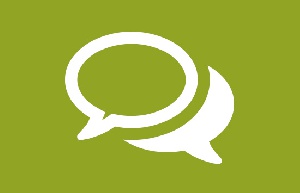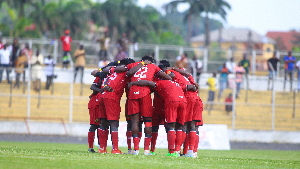A two day conflict unfortunately broke out between some Gonjas and Nchumurus at Kranya-Akura, a village in the Kulaw Area of Gonjaland in East Gonja from on 22nd to 23rd October, 2014.
The genesis of the conflict has something to do with the rightful owners of land and who take royalties around the Kranya-Akura) area where some timber is being harvested. Since the conflict broke, the leadership of the Gonjaland Youth Association has been in touch with the leadership of the Nchumuru Youth Association and has discussed how to deescalate the conflict. This is pursuant to one of the aims of the Gonjaland Youth Association which states: “To foster Unity, solidarity and fraternity amongst our members and other ethnic groups”. The Gonjaland Youth Association has always advocated for peaceful co-existence between Gonjas and their neighbours. That notwithstanding I wish to put on record that there are some inaccuracies in two stories of Daily Guide that need to be corrected quickly or they be taken to be facts. In the first story titled; “2 shot Dead in Yeji” on page 7 of the November 3, 2014 edition the paper reported in paragraph three thus: “The police chief explained that on Wednesday afternoon some Gonjas from Tarakpa, a farming community in the East Gonja District of the Northern region, crossed a river which serves as the regional boundary between the Northern and the Brong- Ahafo regions to harvest timber in a disputed land at Kranya-Akura inhabited by the Nchumurus”. This paragraph denies the ownership of Kulaw by Gonjas and as well the existence of Gonjas on the South of the Black Volta. Talkpa (Tarakpa) is presented as being on the North of the Volta even though it is in the South. Kulaw is a traditional area under the Gonja Traditional Area, headed by the Kulawwura, a Paramount chief and Kingmaker of Gonja. The area has about 84 villages under the Kulaw wura including Kranya-Akura. The paper also said in paragraph 9 thus: “Speaking to Daily Guide, the chief of Kadue, Nana Kwaku Latah V, whose jurisdiction comprises Kranya-Akura, commended the police for their swift intervention and for also maintaining their heavy presence in the community to scare the Gonjas from launching further attacks. Nana Latah however put the number of persons killed in the clash at four, three being Nchumurus and one a Gonja”. With the above, the story presented Gonjas as the aggressors but not the victims. Indeed the fight was about royalties for logging at the Kranya-Akura area and claims of ownership of the lands where the trees were being felled. Gonjas at Talkpa who are in charge of the area sent their emissaries to demand for royalties and one was killed. That is the truth. A Gonja was first. Another bizarre part is paragraph 11 which says: "He (Nana Kwaku Latah V) explained that river Bunjari had been used by the Lands Commission during the Nkrumah regime as a regional boundary between the Northern and the Brong- Ahafo regions”. River Bunjari near the Black Volta and the Black Volta River itself are not necessarily a marker of stool or skin lands but purely for administrative purposes. The Kulaw area shares boundary with Yeji and Atebubu in the Brong-Ahafo region but remain Gonjaland. The Chiefs and people of Kulaw resisted an attempt to be incorporated into the Brong-Ahafo Region after Kwame Nkrumah created it in 1959 and has since been part of the East Gonja District. So rivers in the area cannot serve as boundaries and there is no document that says the Bunjari River serves as a boundary between Gonjas and their neighbours. Everybody recognised and accepts regional boundaries as convenient instruments for administration, but traditional allegiance transcends regional boundaries and examples of these exist in all parts of this country. For instance the land on the Kintampo-Buipe trunk road starting from Babatukuma is an integral part of the Gonja Traditional Area but in Brong-Ahafo. In the second story by Daily Guide titled; “3 arrested over Yeji killings” on page 6 of the November 10, 2014 we read thus; "Reports were that the Nchumurus resisted the Gonjas and the development resulted in a scuffle between the two ethnic groups, resulting in two persons getting injured. The Gonjas retreated and later returned to Kranya-Akura at dawn the following day to launch another attack on the Nchumurus, burning 10 houses in the village and killing two persons in the process". This is not true!! The scuffle resulted in the killing of a Gonja man resulting in the undesirable act of burning houses. It is also worrying to see pictures of Gonjas arrested on 2nd November, 2014 paraded before the media when they are the victims because their brother was needlessly killed. Munkaila Seidu, 30; Oluman Limpo, 20 and Wahab Dramani, 40 -all Gonjas from Tarakpa, a farming community in the East Gonja District of the Northern Region are being held for murder without evidence. The truth is that, these people arrested are humble innocent farmers who did not take part in the fight. Munkaila Seidu and Oluman Limpo were arrested because they were the only Gonjas found in the village of Kabuase as the time of the arrest. Meanwhile if two groups are fighting, why not arrest the two groups rather than arresting one side. What about those who killed a Gonja man at Kranya-Kura resulting in the conflict. When will they be arrested? The right thing should be done to ensure peace prevail in the area. By Mahama Haruna The writer is the Public Relations Officer (PRO) of the Gonjaland Youth Association.
Opinions of Friday, 14 November 2014
Columnist: Haruna, Mahama



















